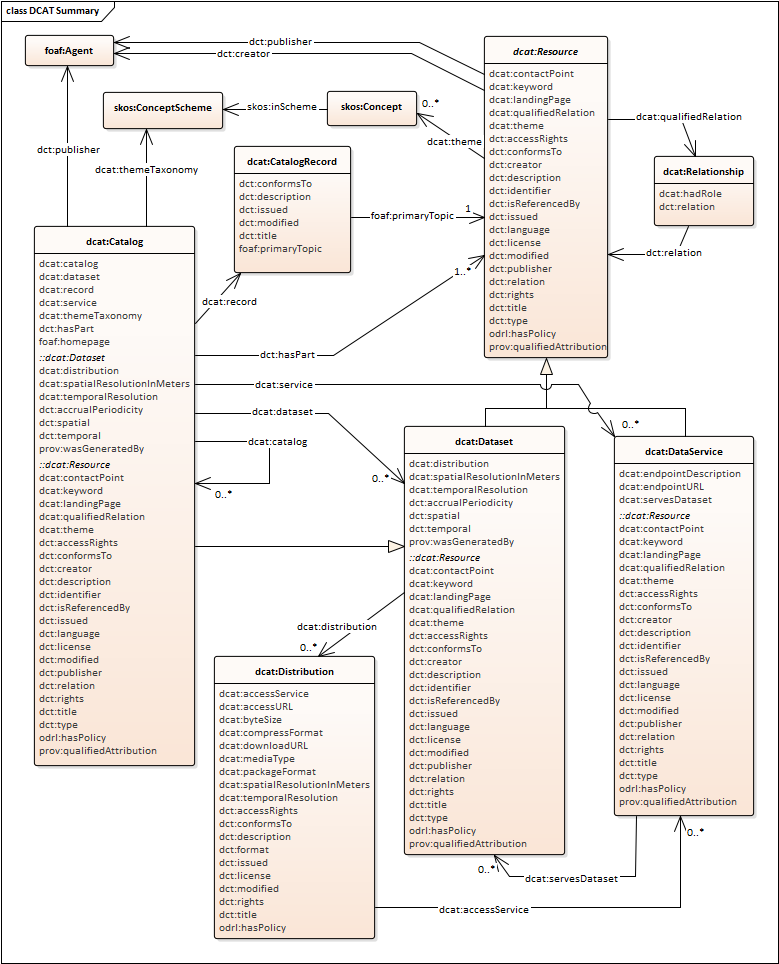Presentation, document
What is DCAT?
The W3C Dataset Catalog vocabulary (DCAT) is designed to facilitate interoperability between data catalogs published on the Web. It is based on a generic model for catalog contents including
- record
- description of (conceptual) entity
- related concrete artefacts
DCAT includes properties from the well known Dublin Core metadata element set, which are associated with classes for
(Original 2014 edition of DCAT)
- Catalog - a set of dataset descriptions and associated catalog records
- Record - the registration information for an item in the catalog
- Dataset - the description of a dataset, considered as a conceptual entity
- Distribution - the description of an actual representation of a dataset, e.g. a file using a specified format
since a Dataset may be available in more than one format or representation, there is in general a 1:N relationship between Dataset and Distribution
(Upcoming 2019 extension of DCAT)
- DataService - the description of a facility for discovery, access or processing data or related resources
- and sub-classes DataDistributionService and DiscoveryService
- catalogued Resource
- superclass of Dataset, DataService, and potentially other things that need cataloguing
Where is it used?
Europe - various APs, incl GeoDCAT-AP
CKAN add-on
Implementation
DCAT is formalised as an RDF vocabulary.
- dcat: Classes + skos:Concept/ConceptScheme + foaf:Agent
- properties from dct, dcat
- new classes for Services
- new properties from PROV-O, DQV
Mix and match with any (compatible) RDF
- ORG
- SSN/SOSA
- QB
- VoID

